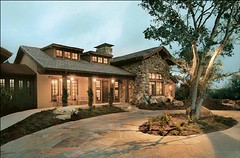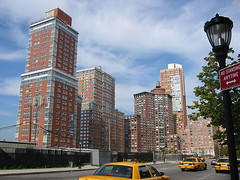New analysis: LEED standards need reform to reflect environmental costs of driving

Posted July 31, 2008 at 1:08PM
Hey, it’s not just me. The amazing Todd Litman, who has literally written an encyclopedia of information on transportation and the environment, has recently joined the debate on what makes a green building really green.
 In particular, through his professional home base, the Victoria Transport Policy Institute, Todd has just published a thorough – and thoroughly documented – paper that analyzes the credit system used by the US Green Building Council to evaluate buildings, and finds that the standards used to evaluate and influence the transportation characteristics of our built environment are underweighted and ineffective.
In particular, through his professional home base, the Victoria Transport Policy Institute, Todd has just published a thorough – and thoroughly documented – paper that analyzes the credit system used by the US Green Building Council to evaluate buildings, and finds that the standards used to evaluate and influence the transportation characteristics of our built environment are underweighted and ineffective.
He is also a lot more diplomatic about it than I usually am:
“Typical LEED programs reduce building energy consumption 20-60%. Cost effective mobility and parking management programs often provide similar motor vehicle trip and parking generation reductions, resulting in large economic, social and environmental benefits. However, the current LEED rating system offers few mobility and parking credits, and overlooks some of the most effective. It encourages practitioners to choose strategies based on their ease of implementation rather than effectiveness. [Emphasis added.] As a result, the current LEED rating system is unlikely to implement mobility and parking management as much as optimal.”
Todd, whose work I have consulted for years, adds that another advantage of effective transportation incentives is that they provide multiple benefits. While vehicle fuel efficiency or building efficiency, for example, reduces energy consumption and pollution, “transport and land use management strategies that improve mobility options, reduce total motor vehicle traffic, and create more accessible land use patterns tend to provide multiple benefits.”  Those include not just energy and pollution savings but also reduced traffic congestion, reduced infrastructure costs, fewer accidents, reduced land consumption, and increased physical activity. That’s smart growth theory in a nutshell.
Those include not just energy and pollution savings but also reduced traffic congestion, reduced infrastructure costs, fewer accidents, reduced land consumption, and increased physical activity. That’s smart growth theory in a nutshell.
The paper correctly identifies a range of land use factors including regional accessibility, density, mix of uses, centeredness (in a region), and access to transit, among others. Its central proposal, which deserves some consideration, would replace the prescriptive standards in LEED (e.g., credit points for bike storage, location near transit stops, etc.) with a modeling exercise that uses state-of-the-art trip generation models to predict travel to and from a building, and award LEED credit depending on the performance level achieved, rather than the specific actions taken.
The effect would be that more urban locations would have to do less to earn certification, and more far-flung locations would have to use more aggressive transportation management measures.
LEED already requires modeling for building energy efficiency, so this really would just make the two major categories of energy consumption and carbon emissions more parallel. My only quibble is that I would model vehicle miles traveled rather than trips. VMT more closely tracks carbon emissions, and VMT modeling captures the smart growth benefit of shorter driving distances, which trip modeling does not.
Interesting stuff. Go here for the full adult dose.